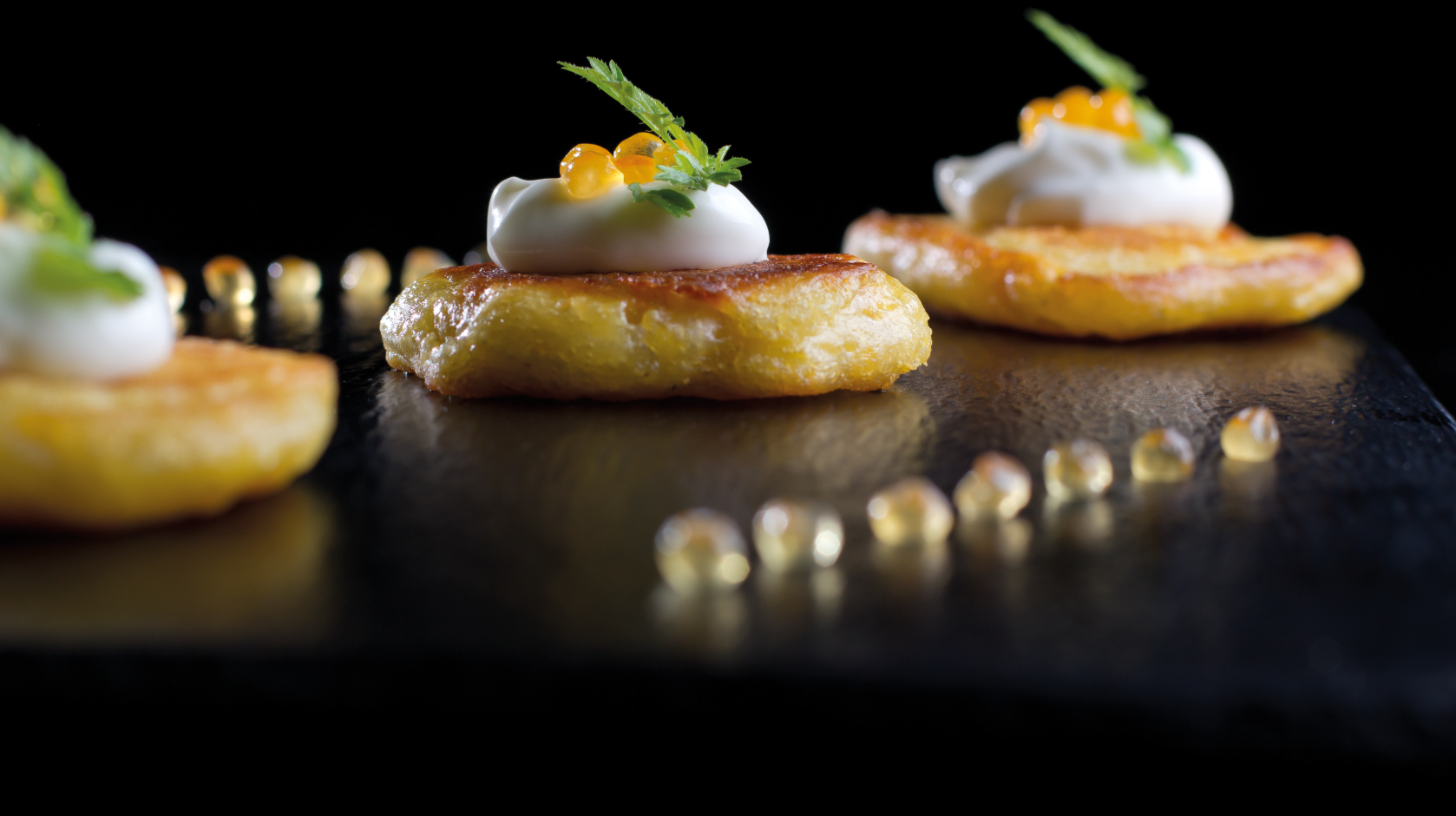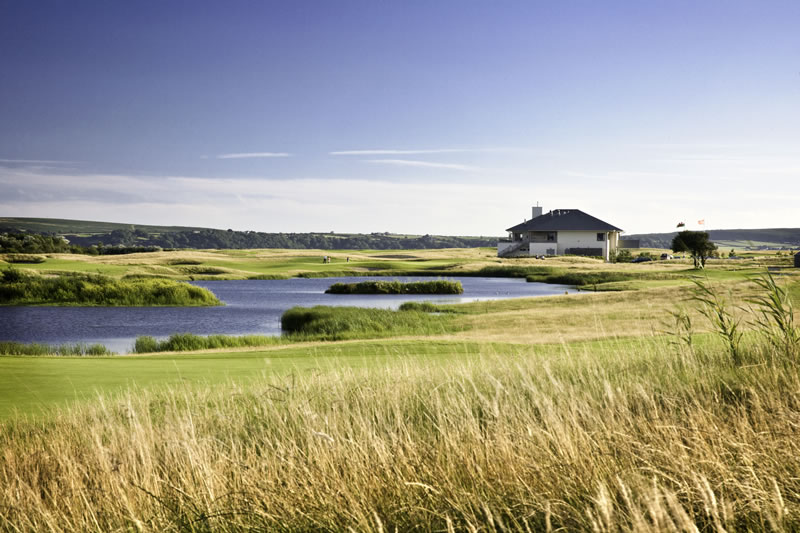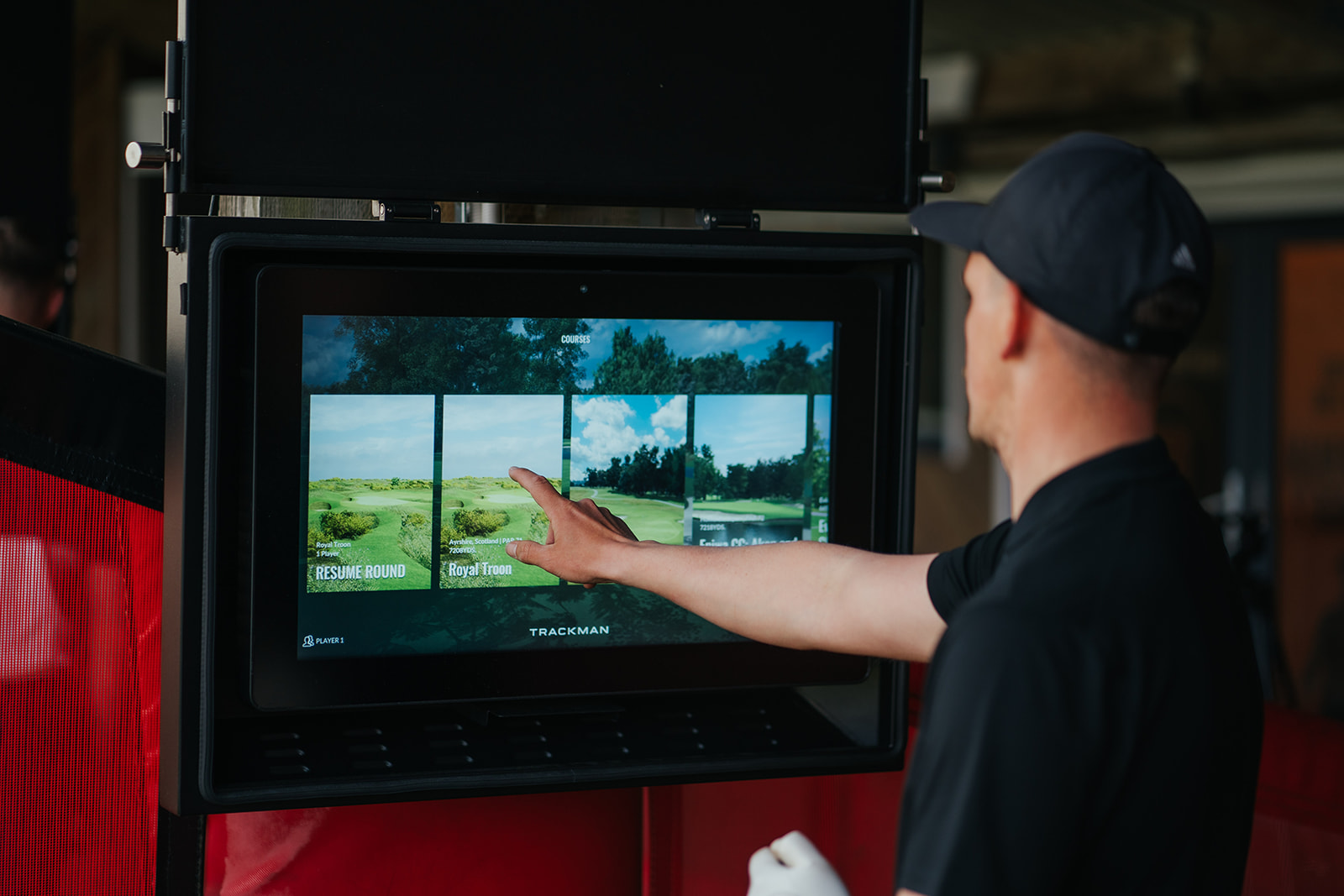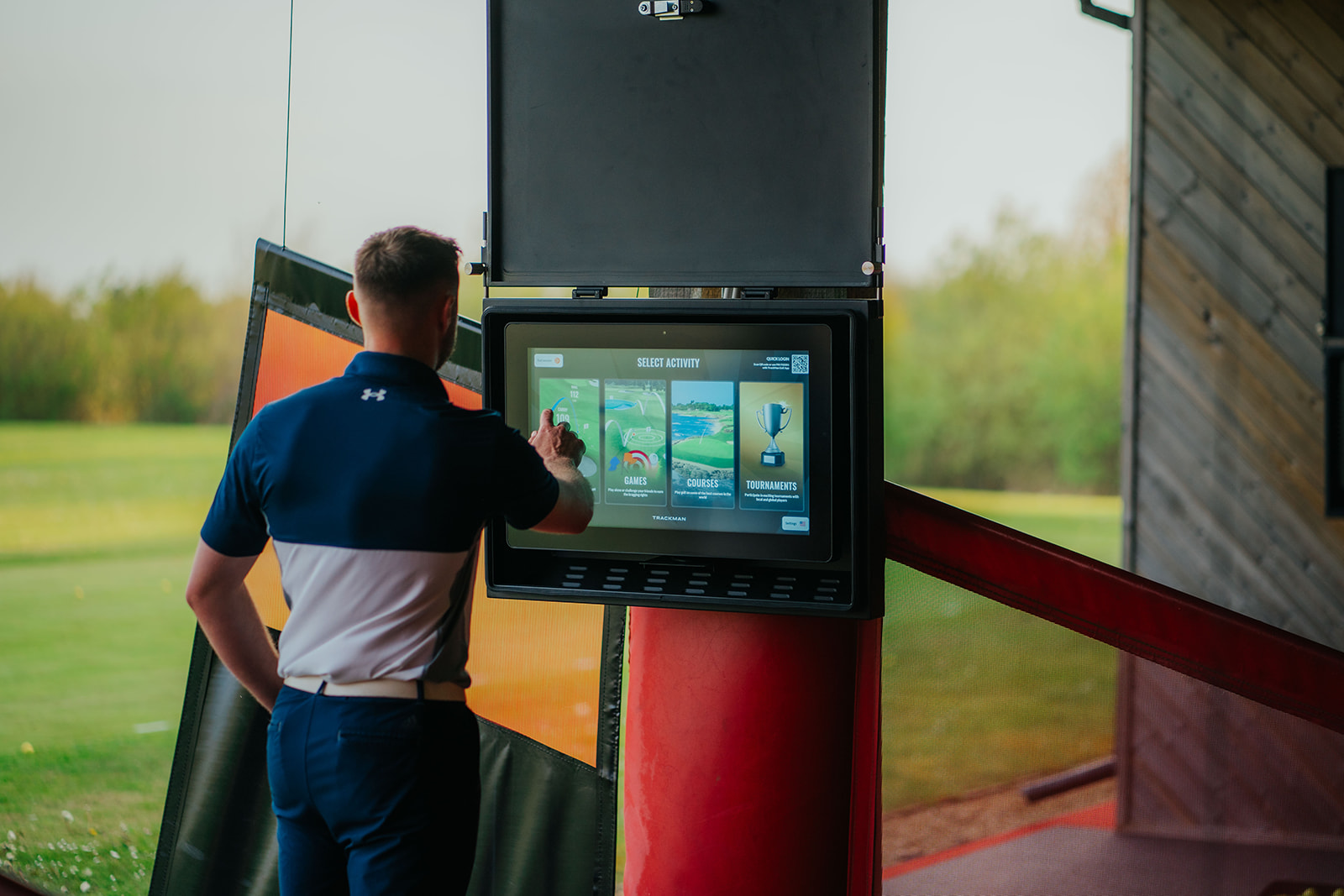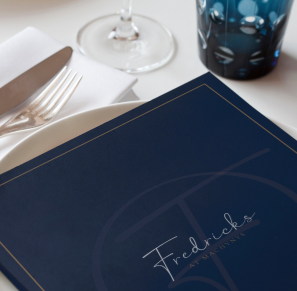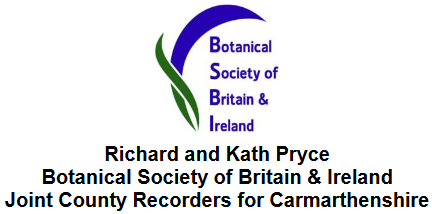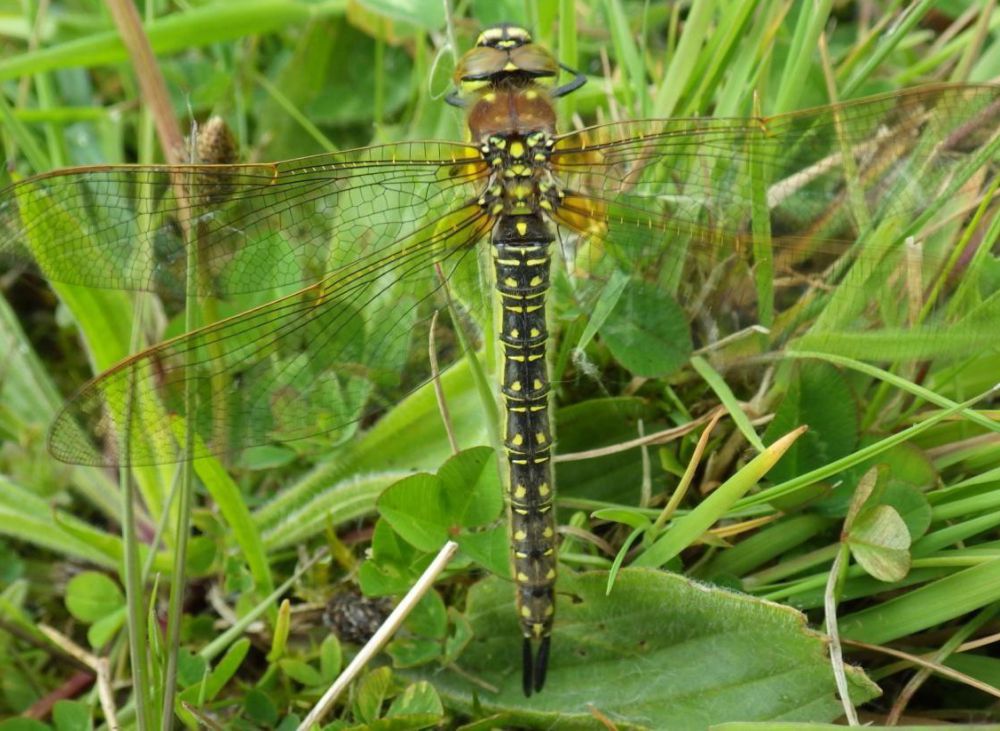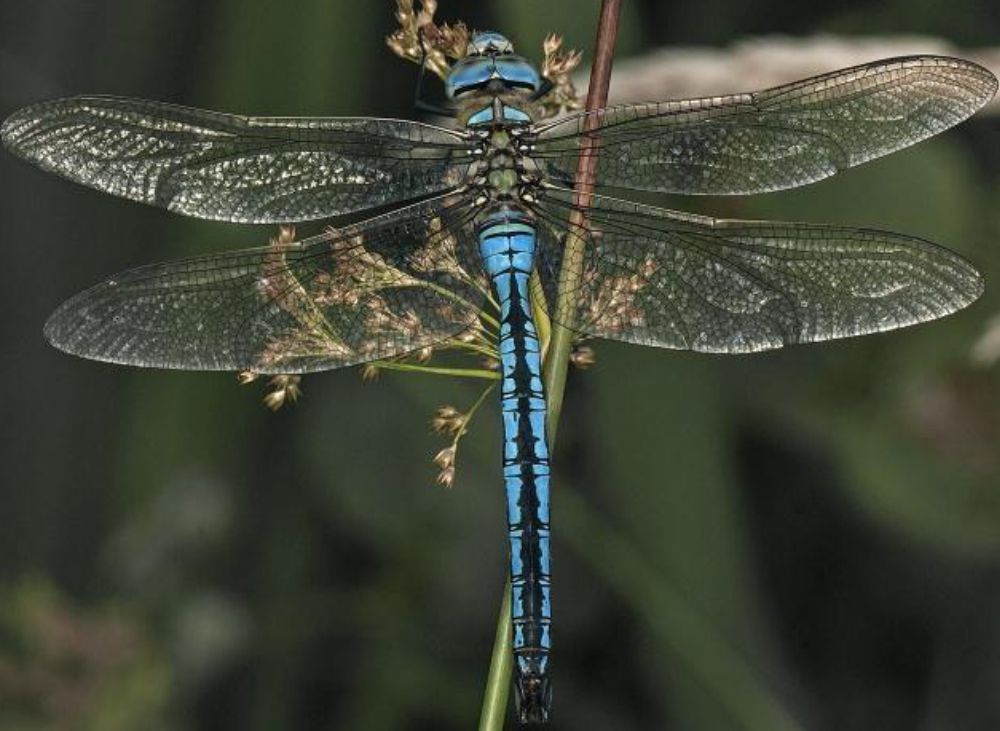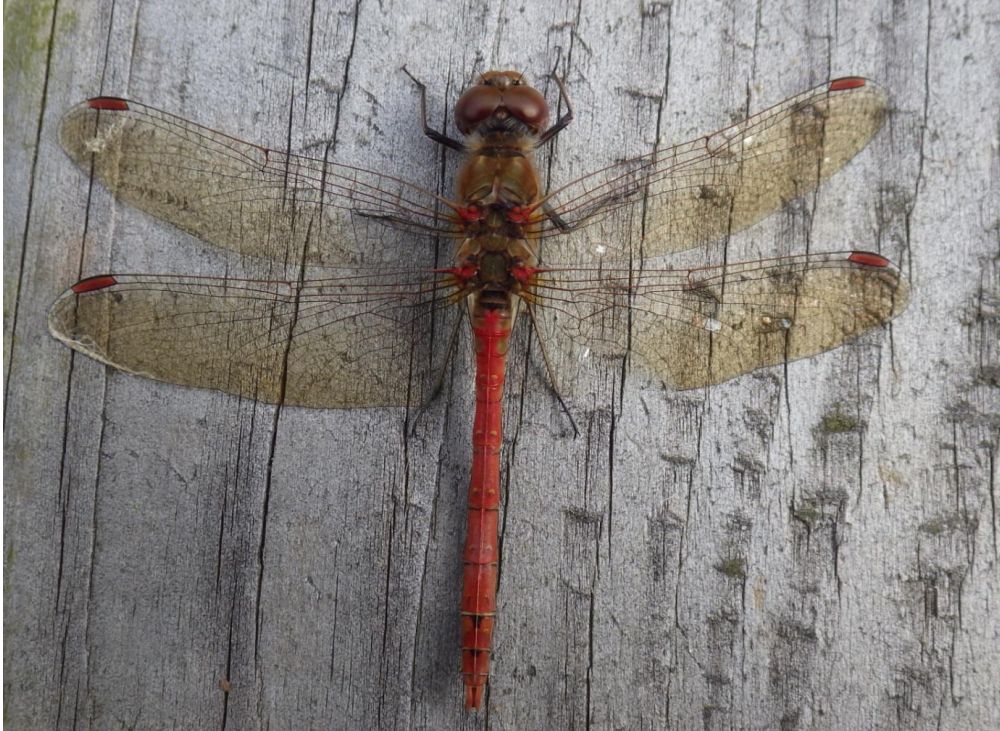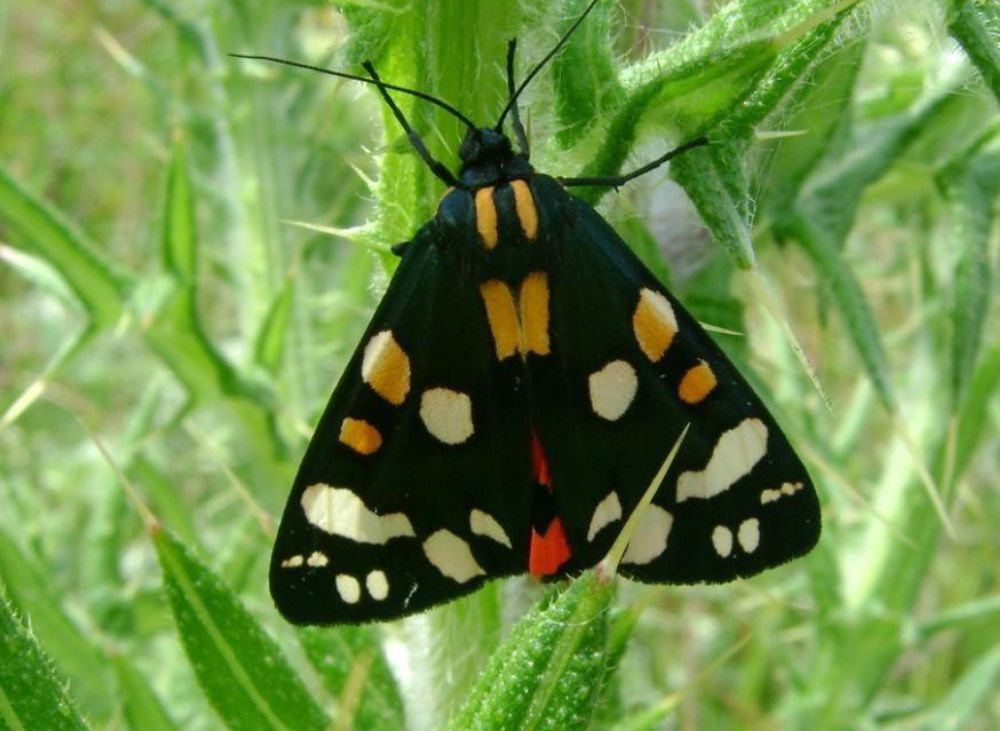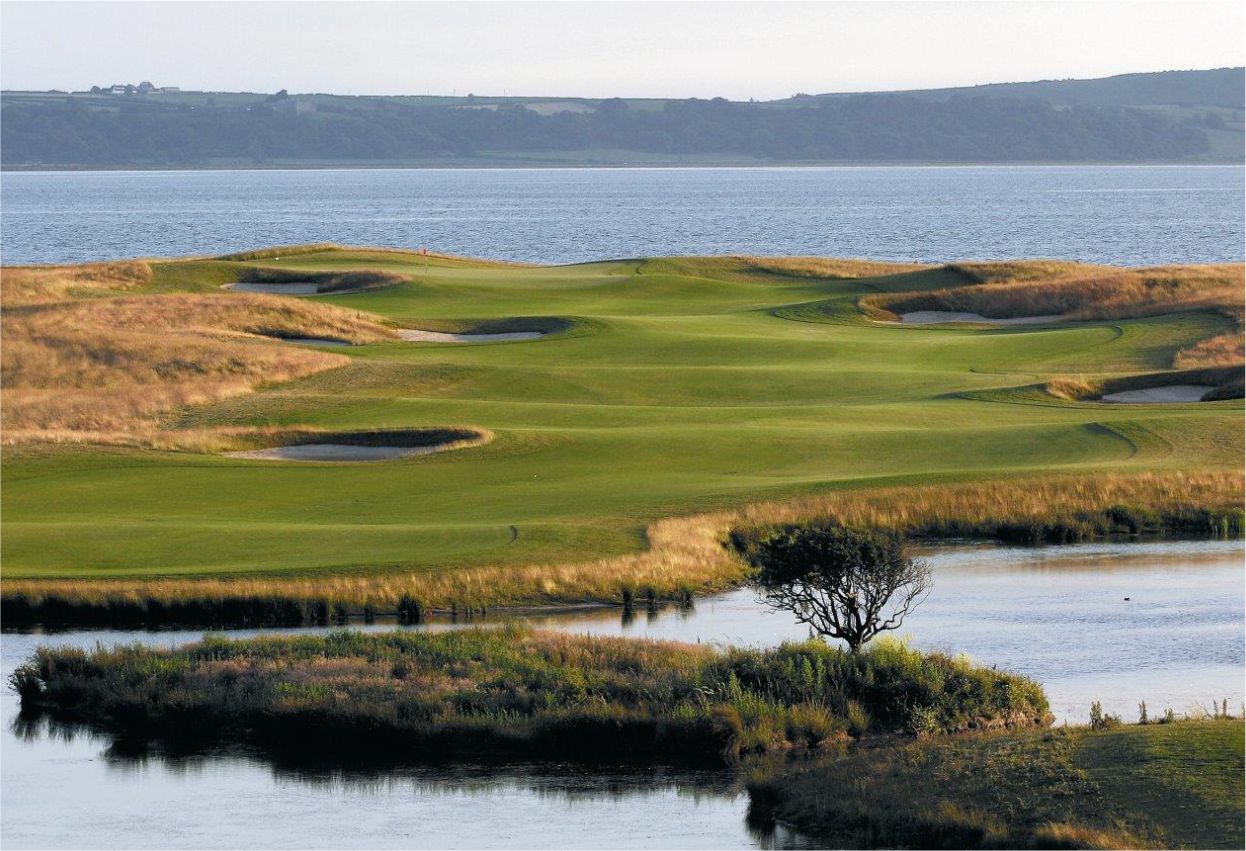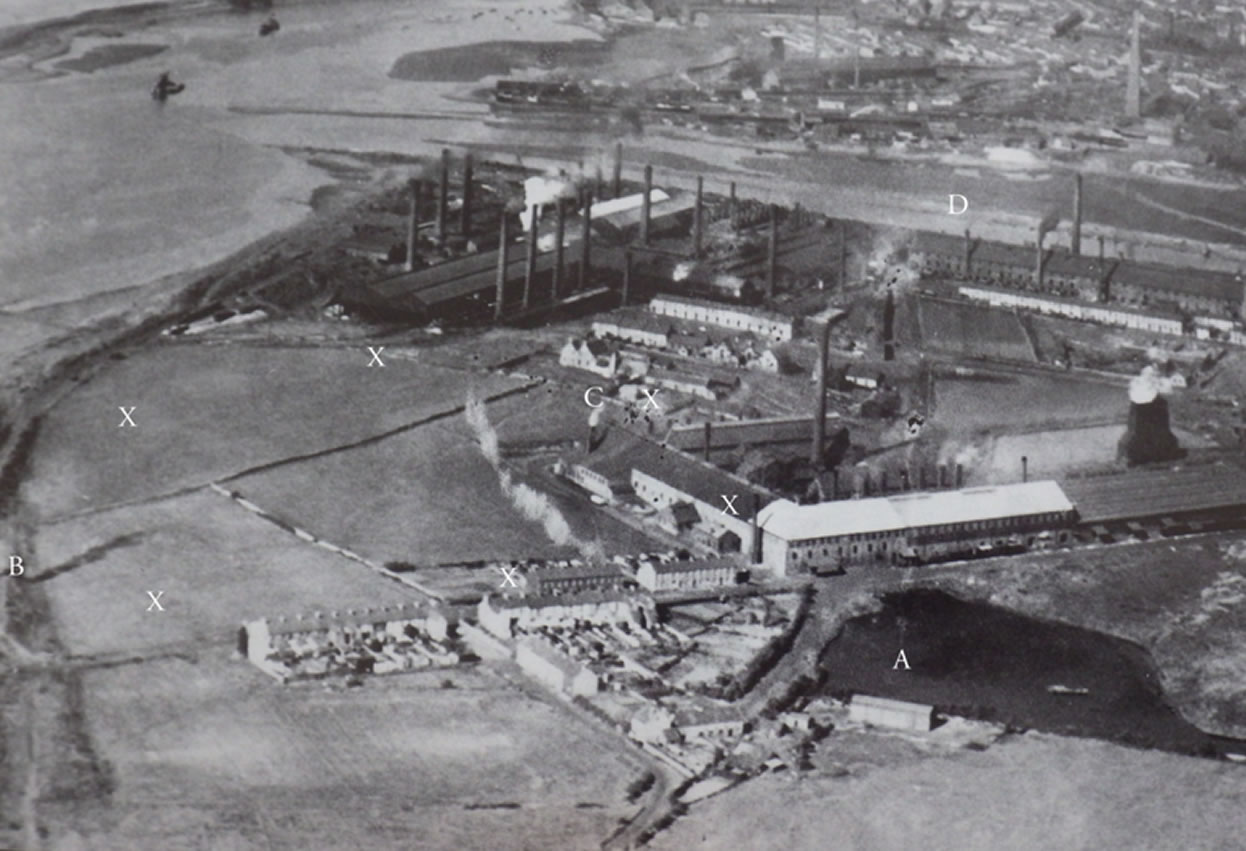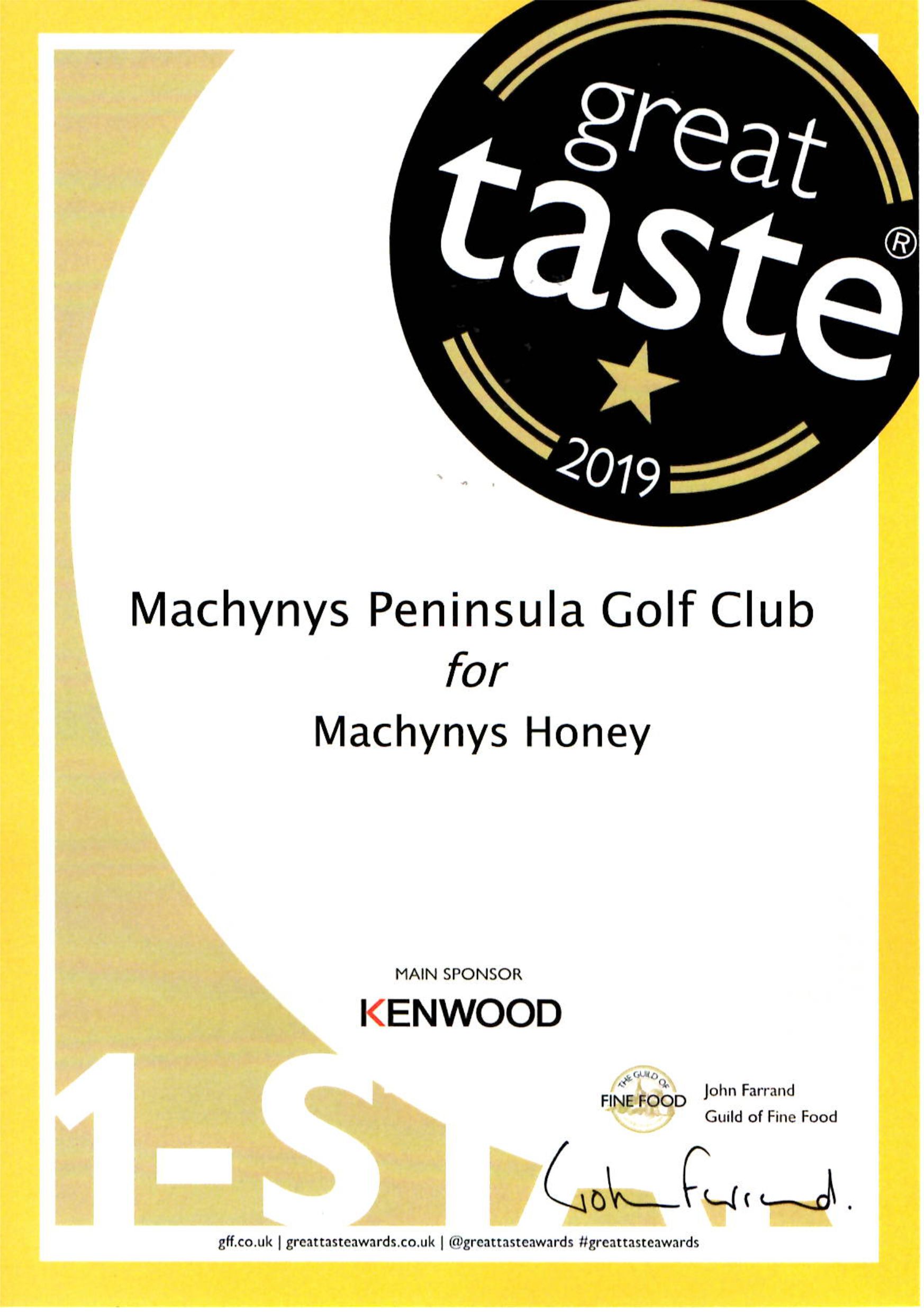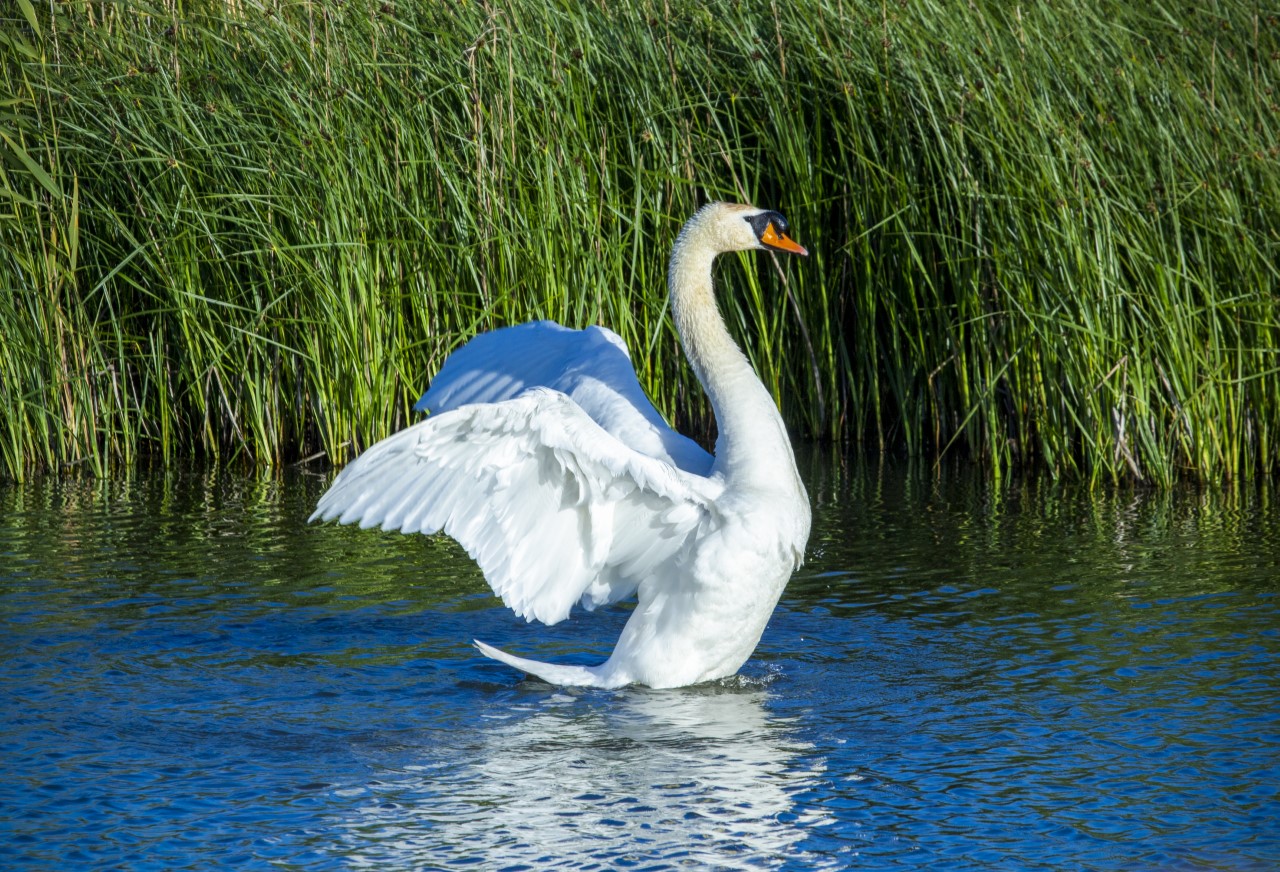
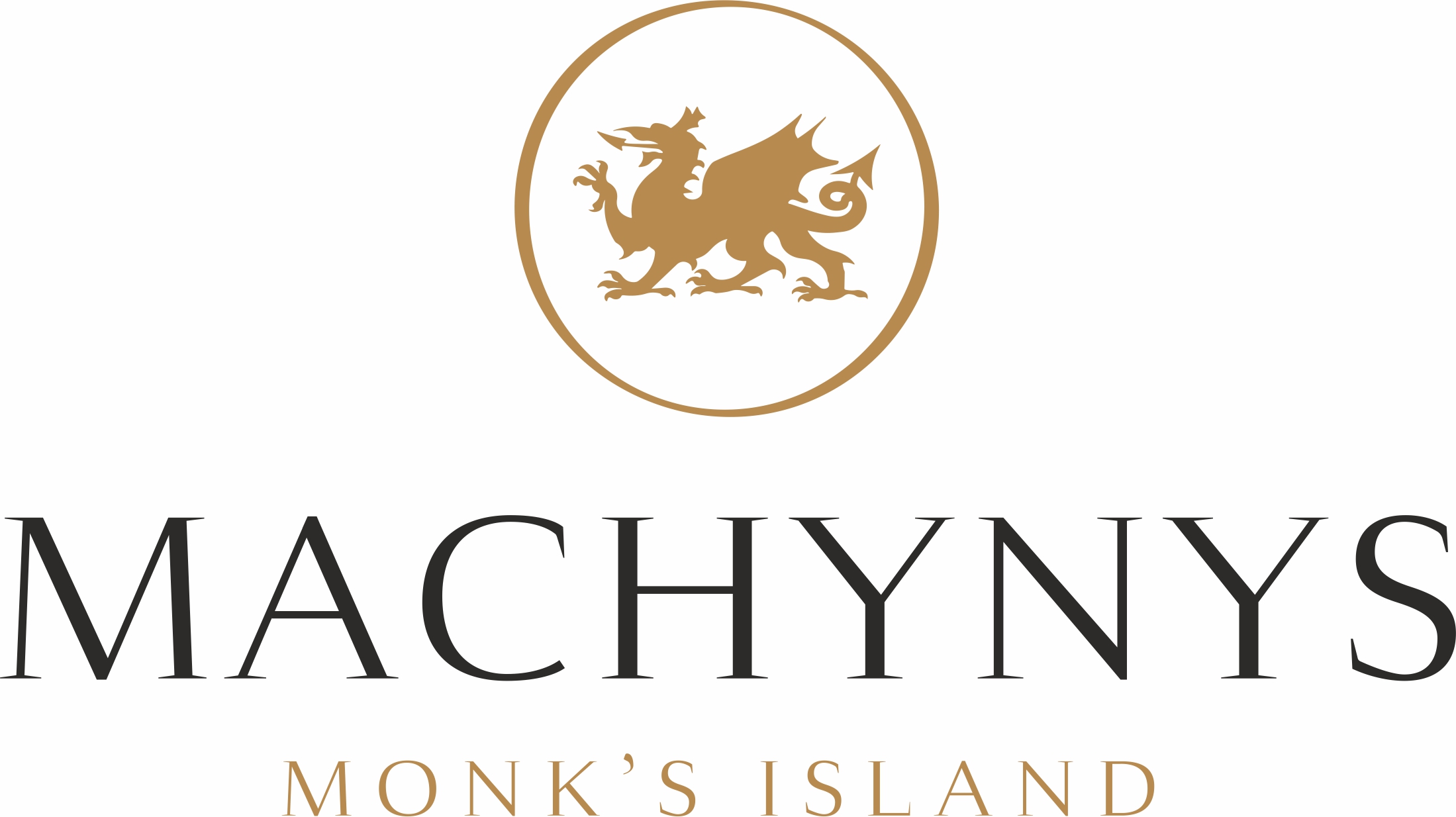
Machynys – A rich environment for nature
Arriving at Monk’s Island golf course on a sunny spring morning, you will be greeted by the explosive song of the Cetti’s Warbler, a small bird of wet places that first bred in Britain in the 1960s. Machynys is a stronghold for this species and a home for many others.
By carefully preserving half the course as wild habitat, the golf club has created a haven for birds, plants and insects that make it a valuable wildlife environment. The many ponds hold breeding waterfowl, such as Gadwall, Mute Swan, Little Grebe, Coot and Moorhen. Another sound of spring is the Little Grebe’s loud “whinnying” call resounding across the water. The many ditches and wet places attract Grey Herons and Reed Buntings, with Reed Warbler and Sedge Warbler breeding in and around the reed beds. The damp areas are dotted with the purple spikes of Southern Marsh Orchid in late spring and early summer.
During the summer, Swallows and House Martins feed over the course, especially over the ponds when the weather is inclement, when they may be joined by Swifts. Ravens cronk loudly as they fly over and Red Kite and Buzzard can be seen soaring over the course all year round.
Thickets of trees on the course provide nest sites for Blackcap and Chiffchaff, with migratory Whitethroat and Willow Warbler in the scrubbier vegetation. Song Thrushes and Blackbirds also nest in the more wooded areas, along with Blue Tit and Great Tit, Robin and Dunnock. Wrens sing loudly from clumps of vegetation.
The rough grassy patches are important places for Skylarks, and they can be heard singing, high in the sky, for much of the year, from early spring until late summer. These grasslands also host Bee and Pyramidal Orchids and grassland butterflies such as Small Heath and Common Blue.
Outside of the breeding season Curlew and Black-tailed Godwits may feed on the grassy turf, whilst in Spring, small groups of Whimbrel will drop in at high tide. The ditches hold Water Rail in the winter, making a pig like squealing amongst the reeds. Winter thrushes from Scandinavia will also drop in during the cold months, to feed on the greens and fairways and roost in the trees.
Golf courses can be rather sterile places for nature, but they don’t need to be. Machynys, through careful design and a sensitive approach, has created a diverse range of habitats. These areas have matured into a site that benefits important wildlife.
Adam Dare. Carmarthenshire Bird Club.

Grey Heron
Photo by Andrew Windsor (lake on 12th hole)

Canada Geese
Photo by Jim Anderson (irrigation pond)
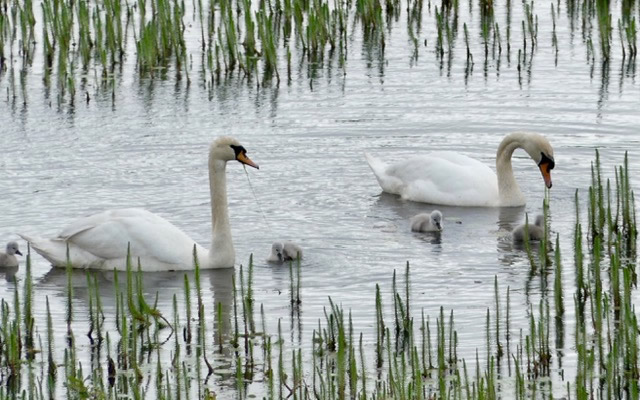
Mute Swan
Photo by Andrew Windsor (lake on 2nd green)
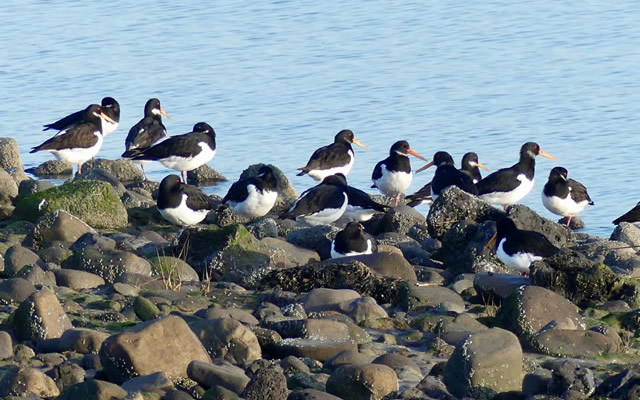
Oyster Catchers taken from the 14th green
Photo by Angela Connor
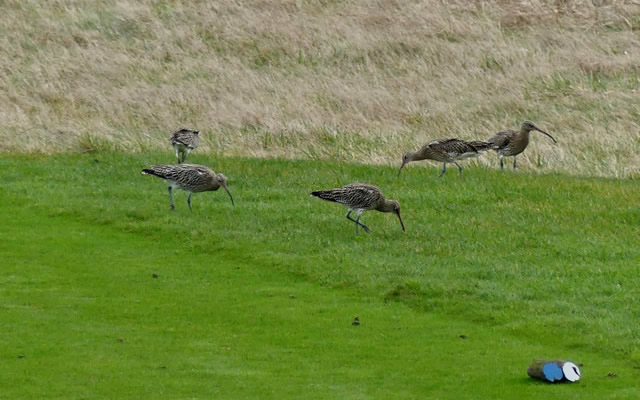
Curlews taken on the 12th tee
Photo by Angela Connor
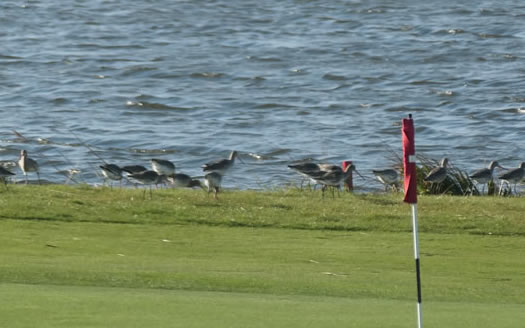
30 plus ‘Black tailed Godwits’ feeding on 15th green at high tide 01/02/20
Photo by Jim Anderson
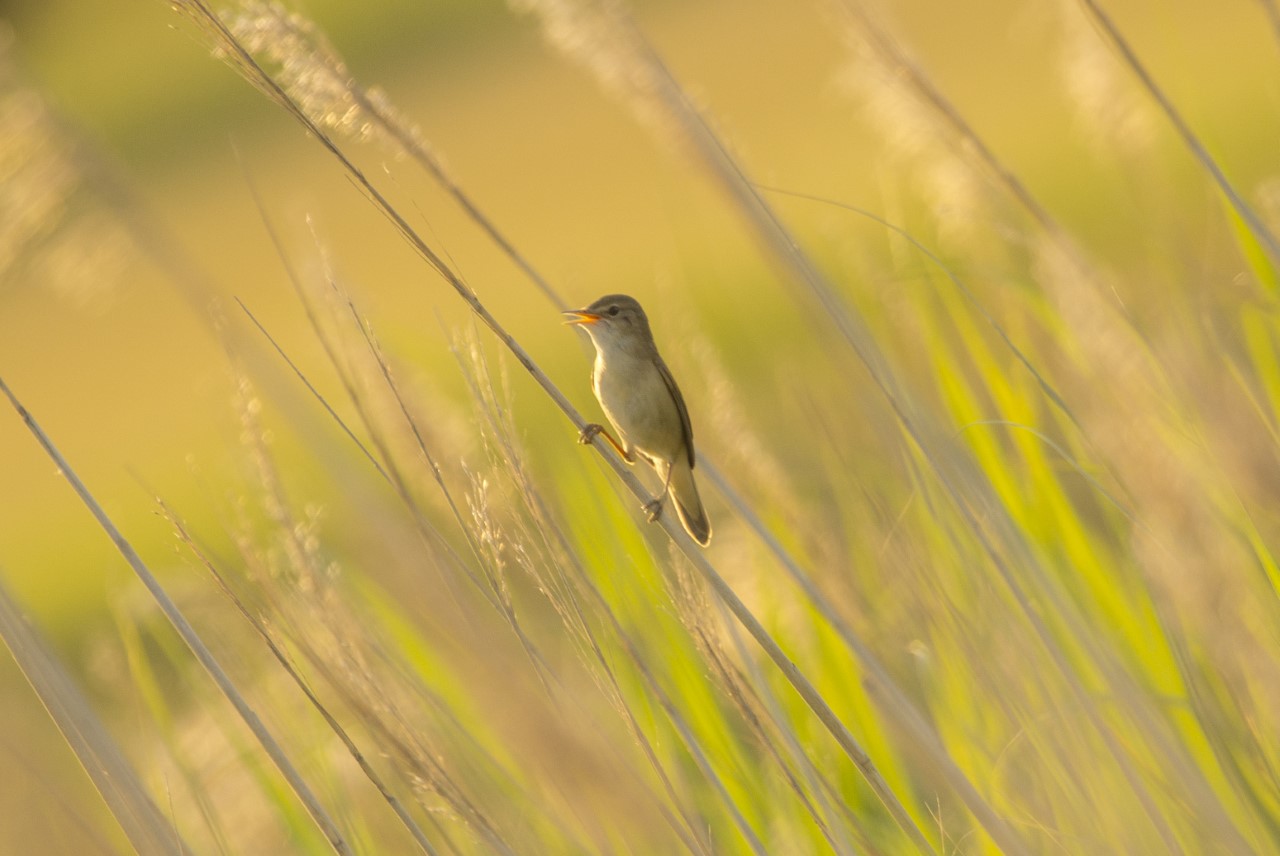
Photo by Shane Yemm (taken on the 11th fairway)
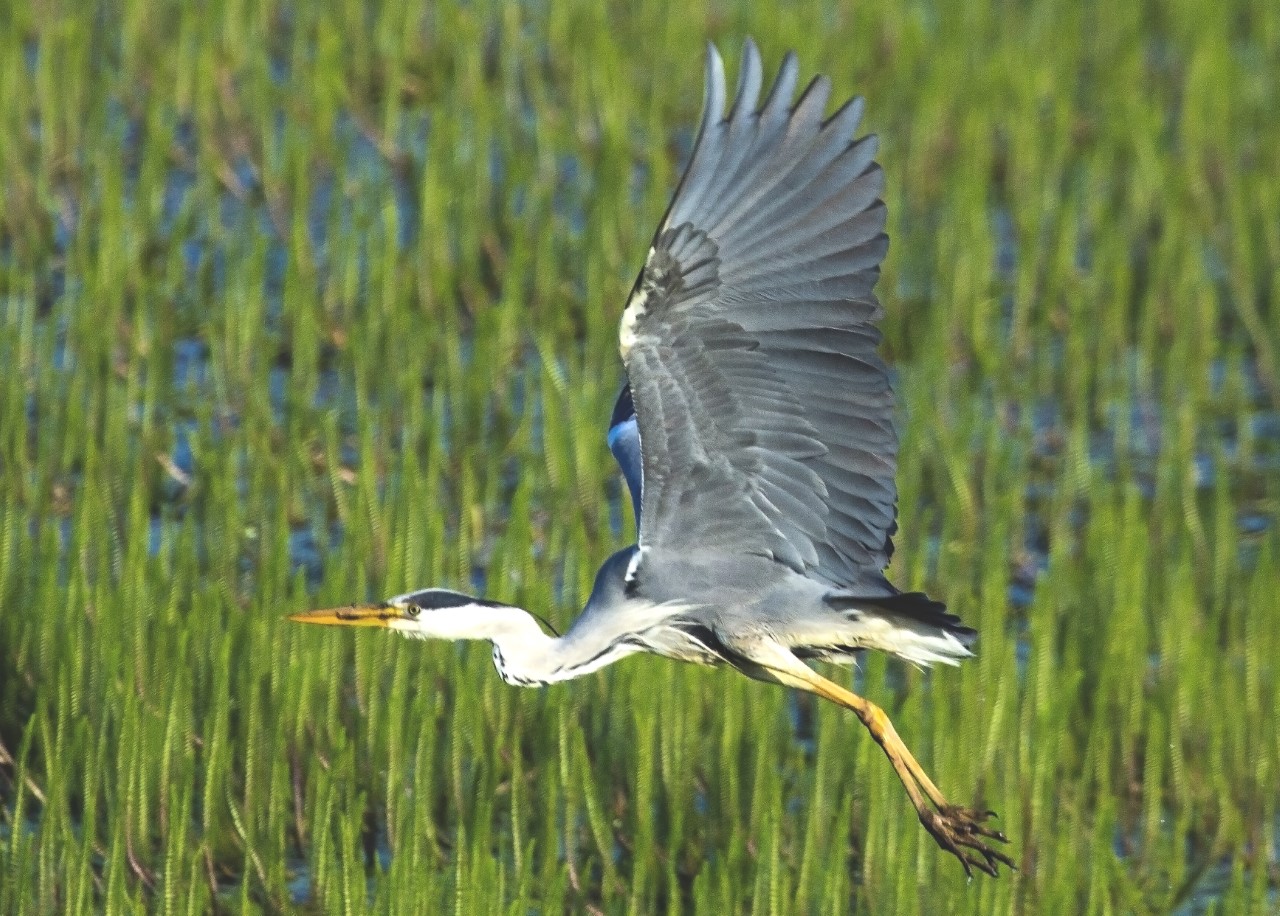
Grey Heron
Photo by Shane Yemm (taken on the 15th fairway)
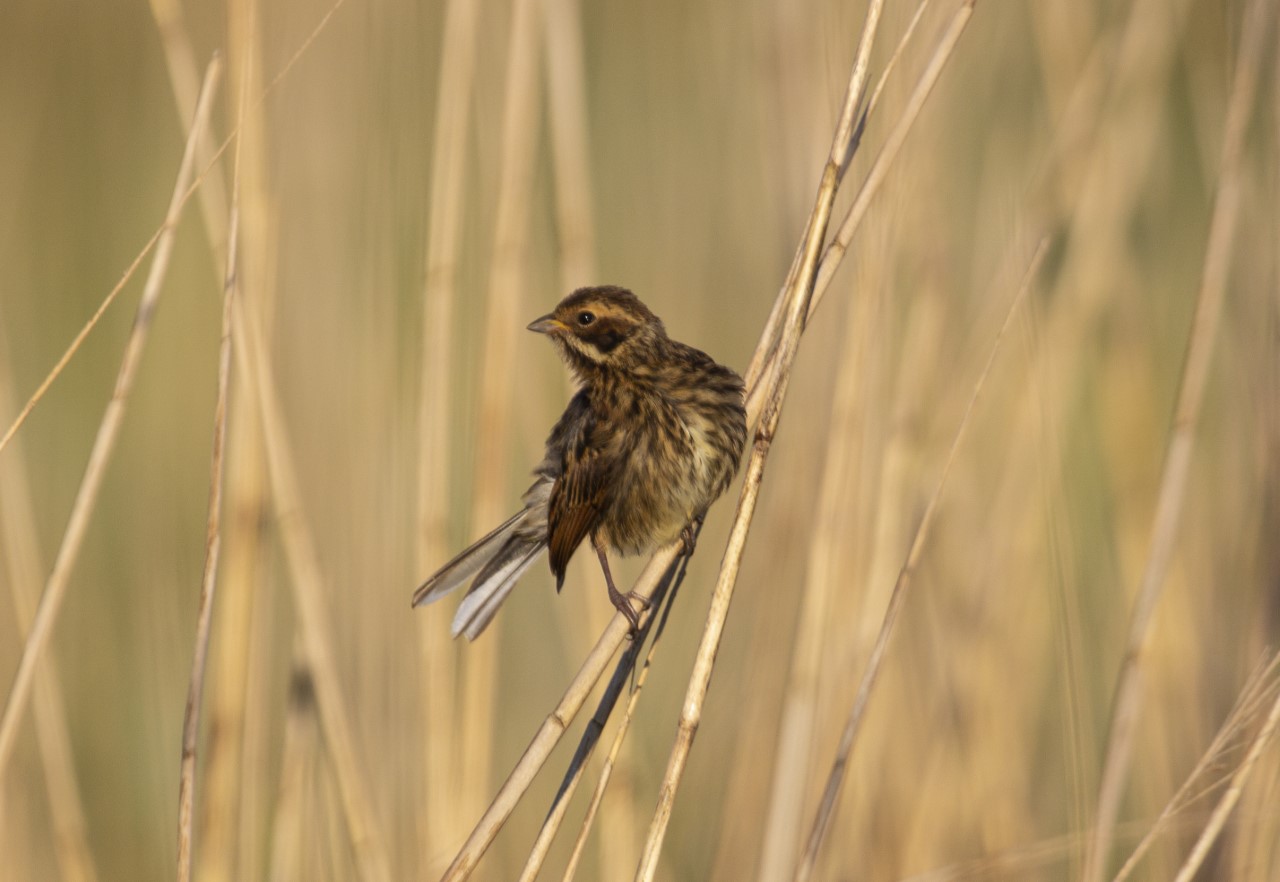
Reed Bunting
Photo by Shane Yemm (taken on the 16th fairway)
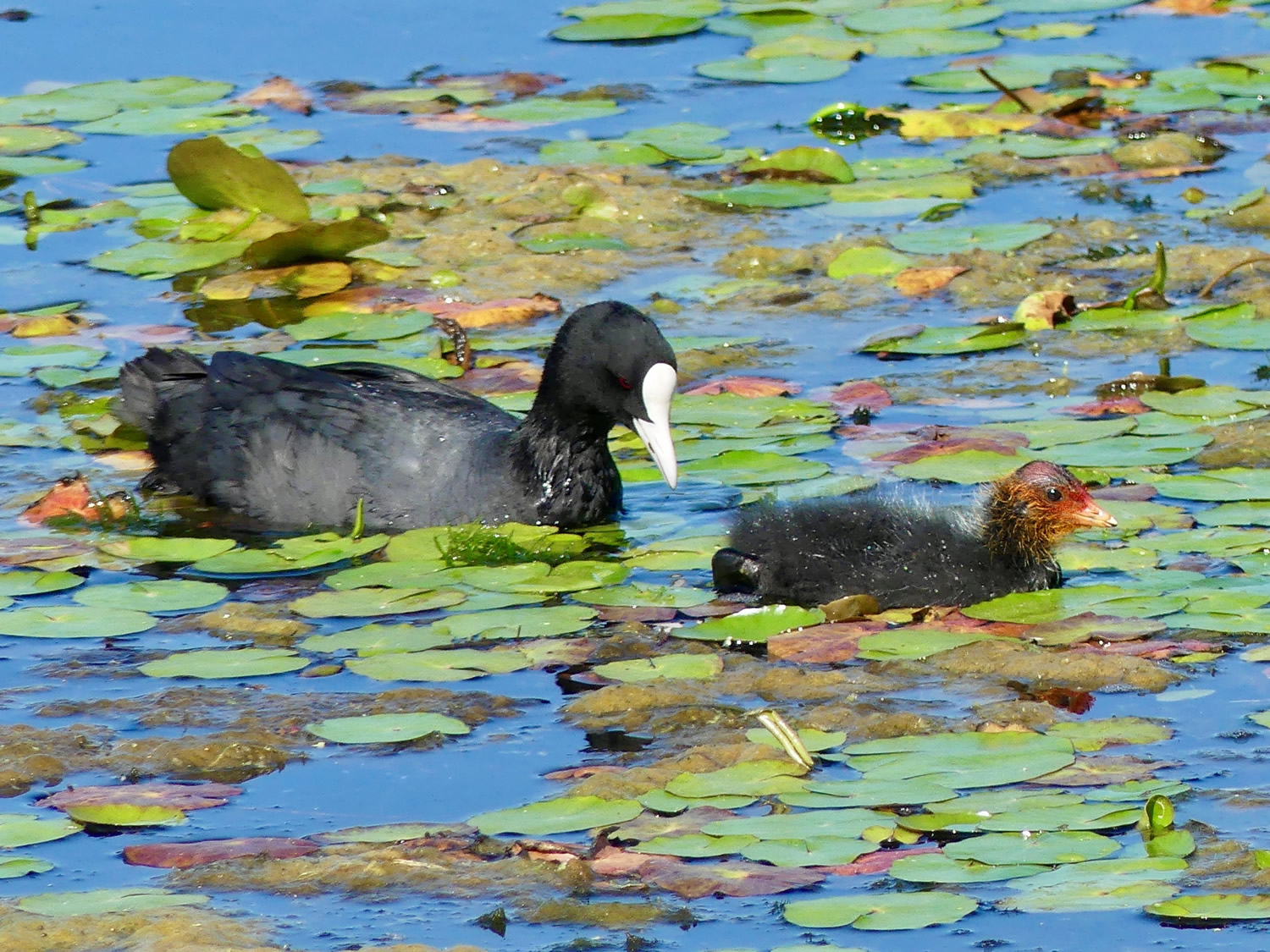
Coot and chicks
Photo by Angela Connor
(taken on the lake near the 12th blue tees)
As well as the birds shown on this page, the following have also been identified during a 2 hour bird survey carried out by Carmarthenshire Bird Club, at Monk’s Island Golf Course:
Canada Goose, Greylag Goose, Mute Swan, Shelduck, Gadwall, Mallard, Tufted Duck, Little Grebe, Grey Heron, Little Egret, Cormorant, Buzzard, Moorhen, Coot, Black-headed Gull, Mediterranean Gull, Great Black-backed Gull, Herring Gull, Lesser Black-backed Gull, Wood Pigeon, Collared Dove, Swift, Magpie, Jackdaw, Carrion Crow, Raven, Great Tit, Skylark, Sand Martin, Swallow, House Martin, Cetti’s Warbler, Chiffchaff, Sedge Warbler, Reed Warbler, Lesser Whitethroat, Whitethroat, Wren, Starling, Blackbird, House Sparrow, Dunnock, Pied Wagtail, Goldfinch and Reed Bunting.

Southern Pyrimidal Orchid
(10th fairway)
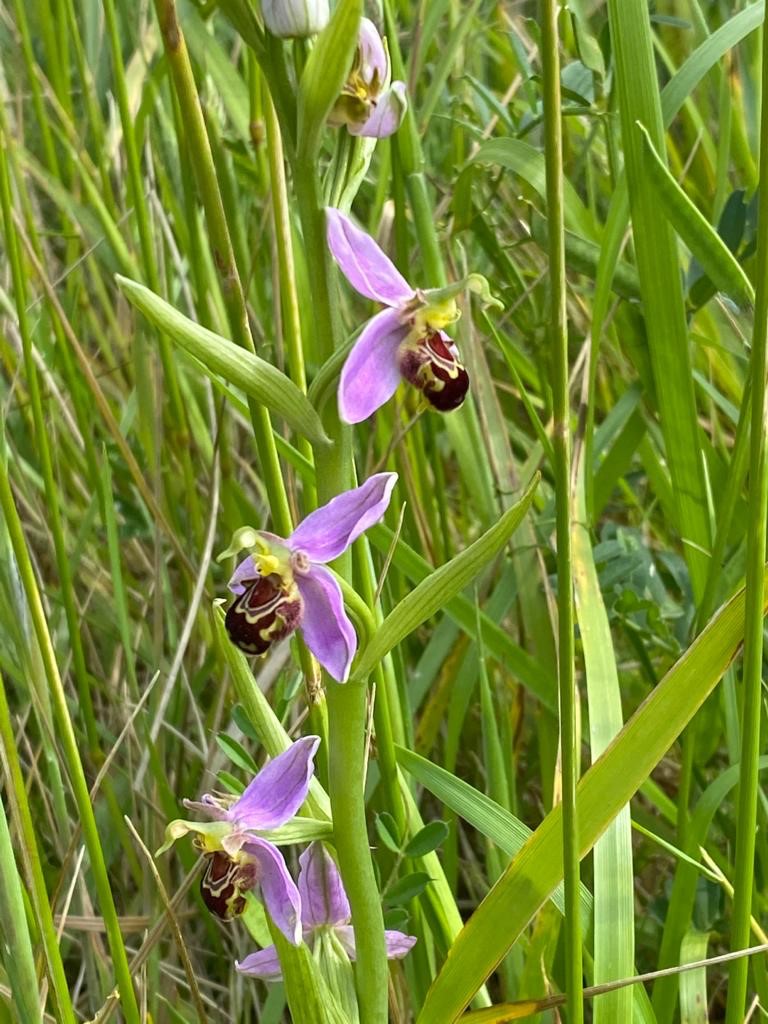
Bee Orchid near 12th tee
Photo by Phil Jones
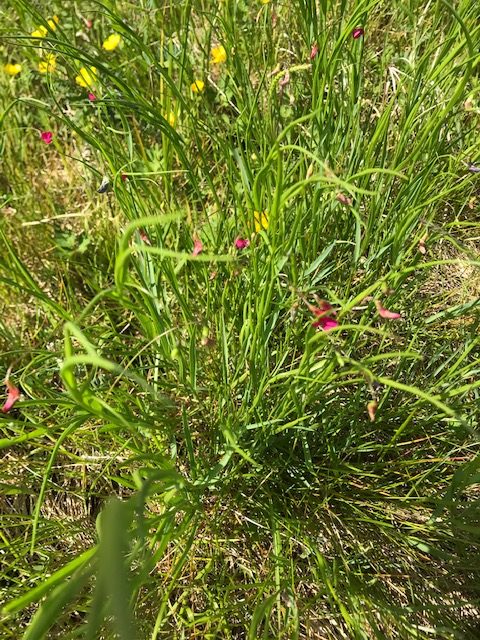
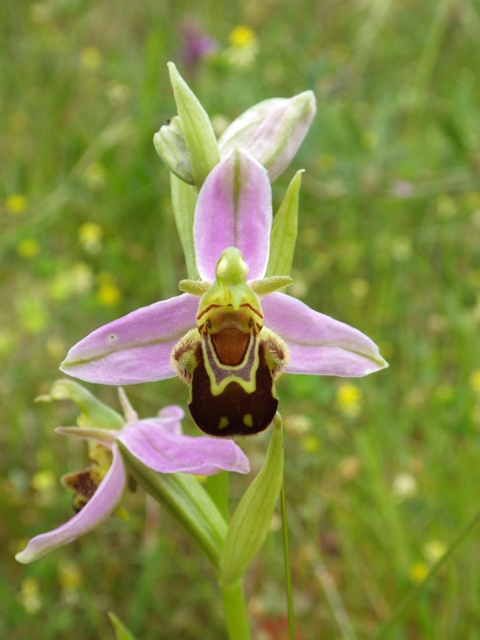
Bee Orchid (14th fairway)
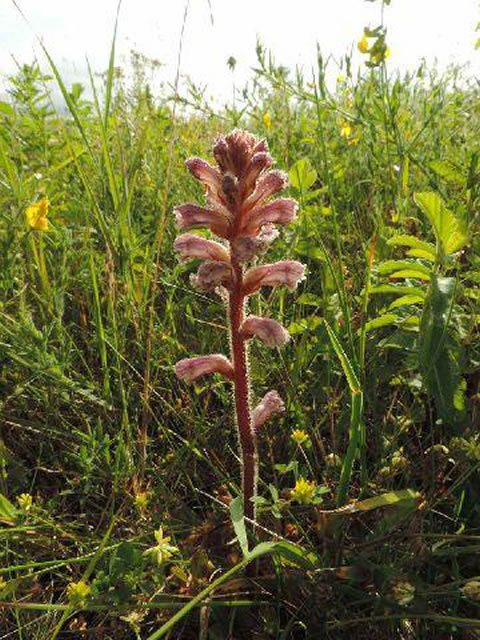
Common Broomrape
(path to the 16th green)
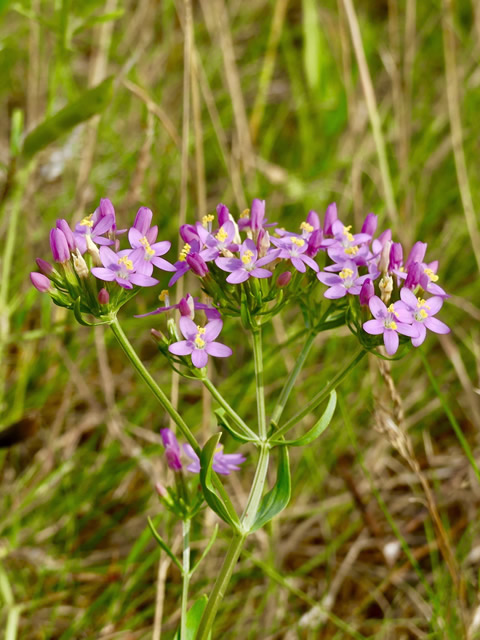
A new plant species found at Machynys not listed in the Royal Horticultural list previously recorded at Machynys. The Common Centaury is a species of flowering plant in the gentian family.
Thank you to our keen-eyed ex Lady captain Angela Connor for spotting the first of its kind at Machynys.
Machynys would like to sincerely thank them for their time and the Botanical Report. We would also like to record and thank Ian Morgan CCW for his invaluable assistance during construction which contributed greatly to making Machynys the wildlife haven it is today and also for his recent 2019 report on Machynys landscape and wildlife, some 15 years since the golf course construction was completed. Ian’s report can be read below. Thanks also to Adam Dare and his colleagues at Carmarthenshire bird club for their contribution to this page, we are most grateful!
Jim Anderson
Chairman MPGCC.
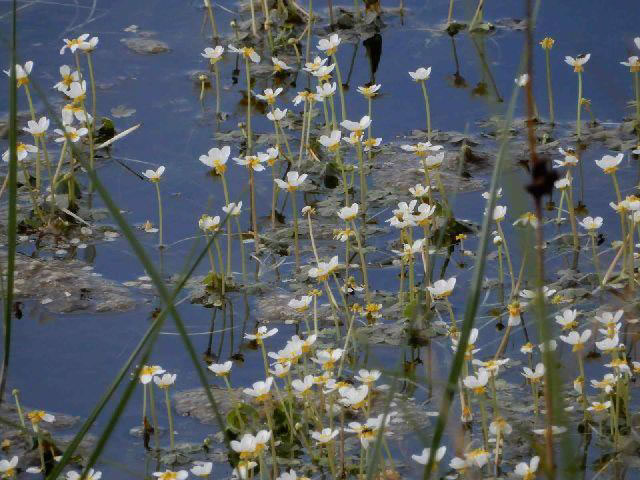
Pond Water-Crowfoot (lake on the 18th hole)
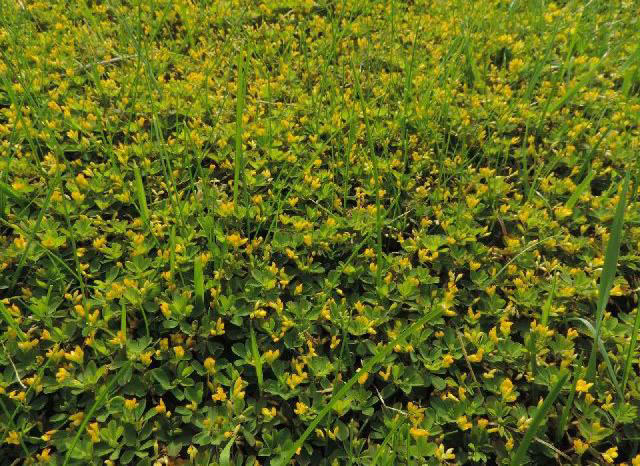
Slender Trefoil (lake on the 6th fairway)
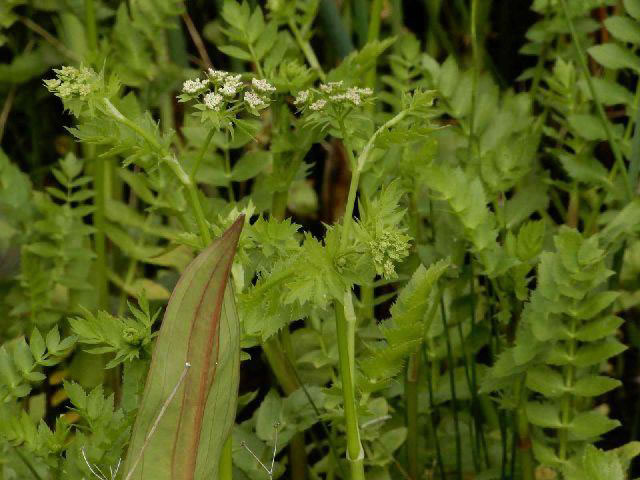
Lesser Water-Parsnip (lake on the 15th hole)
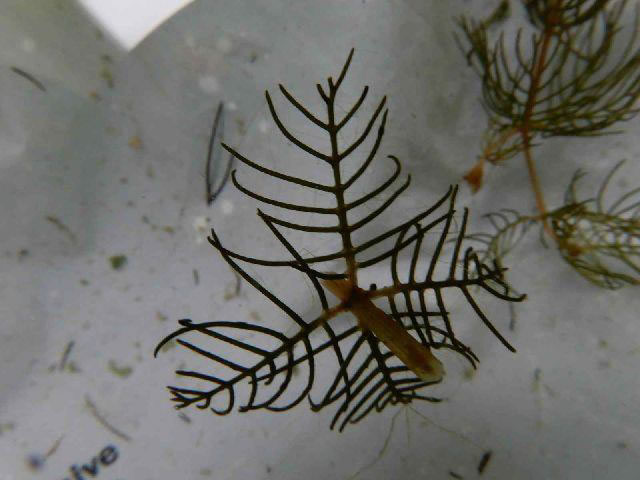
Leaf of Alternate Water-Milfoil (lake on the 9th hole – a new record for the 10km square)
Machynys – its Landscape and Wildlife
Ian Morgan worked for CCW (Countryside Council for Wales) as the Team Leader for Carmarthenshire and his duties were numerous and varied, Machynys Ponds a Site of Special Scientific Interest (SSSI) located on the proposed golf course site, fell within his jurisdiction and with the construction of the adjacent Wildfowl and Wetlands Trust’s Penclacwydd Centre nearing completion, he had a significant interest in the newly–hatched plans for a resort golf course next door at Machynys. He realised the potential opportunity for a de facto wildlife reserve that could be developed, in effect, as an extension to the existing ponds and wetlands at the WWT Centre if, of course, the developers were interested and sensitive to this idea.
Jim Anderson from the Nicklaus JV Group the developers, alongside their architect Gary Nicklaus of Nicklaus Design, were delighted to listen and work in partnership with Ian Morgan and Dr Geoff Proffit from the WWT Centre and had several meetings with them to discuss the golf course plans, this resulted in additional marshland and lake areas being created and a change to the construction profile of the new lakes and connecting streams. Deliberate shelving was incorporated to the sides of the lake banks and streams to encourage the growth of aquatic plants such as Phragmites australis (Common Reed) that would not only provide important habitat for Water Voles but also help and encourage many other species to flourish.
Fifteen years on from the opening of the golf course in 2005, Ian has reflected on the history of the site and the impact the golf course and its construction has had on it, which he summarises in his report as follows:
“Machynys golf-course is a de facto nature reserve as well as being a successful golf course and it certainly contributes significantly to wildlife conservation in a local and a wider context. This success is due to its coastal location and also its unique design features of wetlands and water bodies, coupled with enlightened and sympathetic owners and management. Full marks to Machynys Golf Club!”
Dragonfly and Moth pictures taken at Machynys by Ian Morgan
Then & Now
Photo taken by Doug Simpson.
We believe that this photo was taken in the 1960s/early 70s and it has been taken from the seaward side of the golf-course. Note the big dark building about a quarter the way (left to right) along the mid distance; this building would have immediately overlooked the large westerly golf course pond and the 10th fairway the building remains today. Note the slag deposits evident in the foreground, which created a few problems when constructing the golf course which opened in May 2005 , 20,000 M3 of slag was removed. Photo taken by Doug Simpson.
Picture taken from Machynys clubhouse.
Looking back up the 16th fairway towards where Doug Simpson would have stood, when taking his picture looking back (as can be seen in the image on the left) in the 1960s early 70s.
Once the slag was removed and taken care of, a new lake and Island site was constructed as can be seen in the foreground and the golf courses signature hole the 16th built, the fairway and green site can be seen in the background of the picture.
Machynys circa 1929, looking north.
Photo copied from `The Industrial and Maritime History of Llanelli and Burry Port` by RS Craig et al (2002).
A= The large western golf course pond; now designated a SSSI (originally a clay pit for a nearby brickworks) has been extended on at least two occasions. The tenth par 4 fairway of the golf course now runs alongside the Northern boundary of the pond and the 11th par 3 and twelfth par 4 play over it.
X= the approximate boundary of Machynys hillock, whilst above `C` is the original Machynys Farm.
B = approximate position of the golf course 14th tees, note ridges of dumped copper/iron slag to S (i.e. left).
D = `The Channel`, the access to the New Dock (since infilled at/near modern Lidl`s store.
Great Taste, organised by the Guild of Fine Food, is the acknowledged benchmark for fine food and drink. It has been described as the ‘Oscars’ of the food world, and the Great Taste logo is the sign you can trust when buying our Pure Carmarthenshire Wildflower Honey.
Our natural clear wildflower honey is foraged by our own busy bees (now totalling almost 1 million) from the hives situated on Monk’s Island golf course at Machynys.
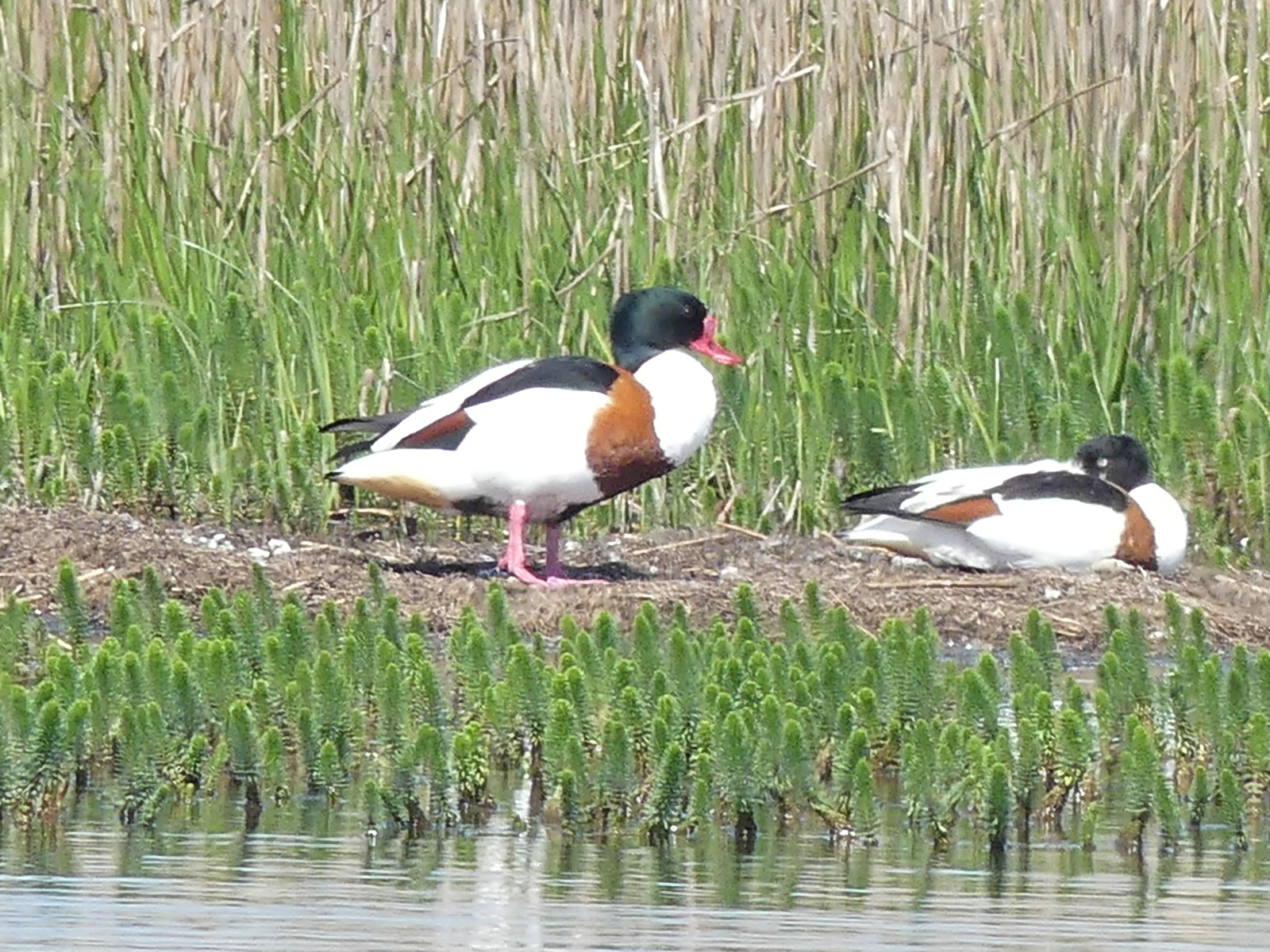
Two nesting Shelduck, alongside the 9th fairway, the male showing off his impressive breeding plumage. Notice the red knob where the top of the bill meets the forehead. Photo by : Andrew Windsor
